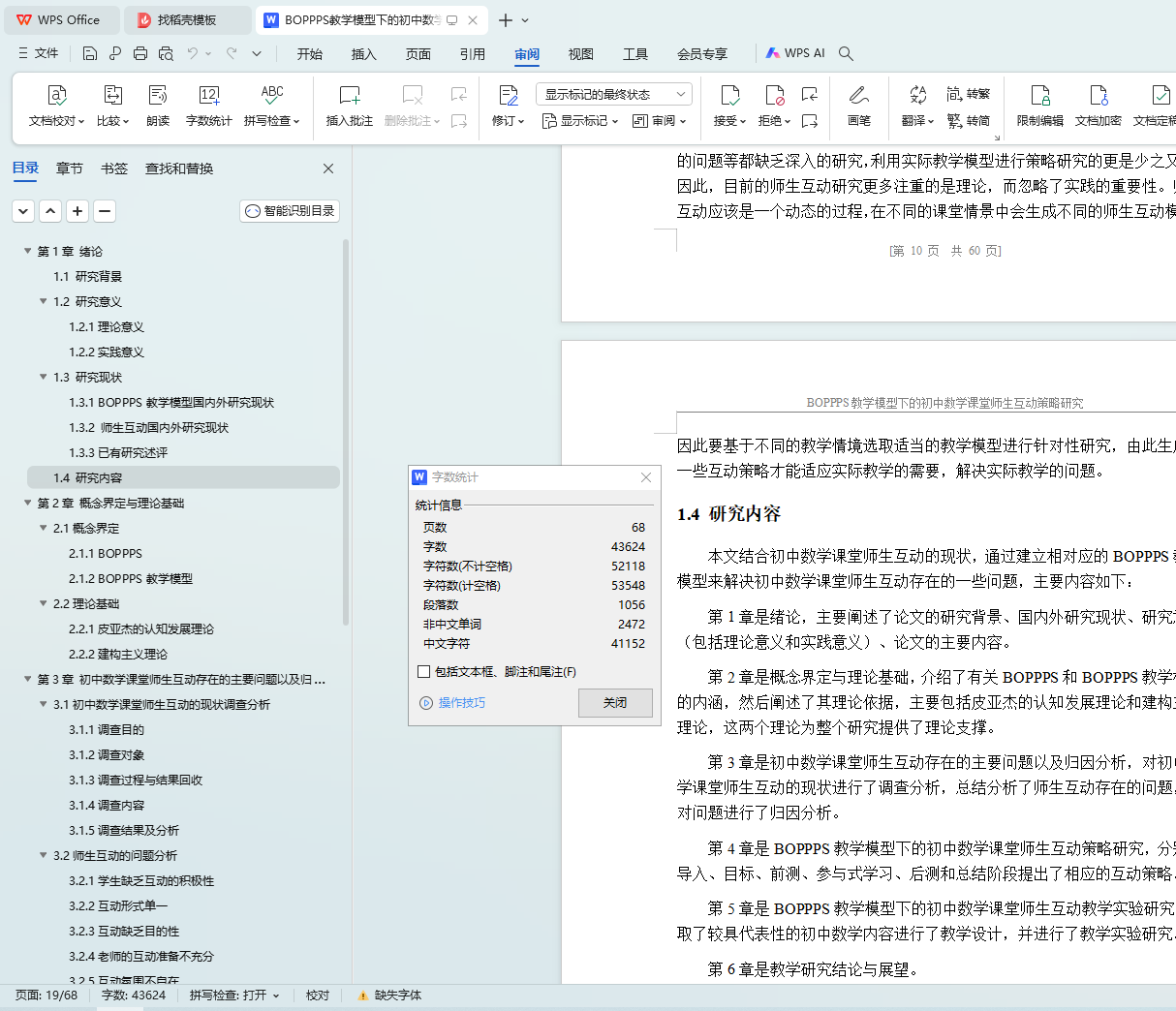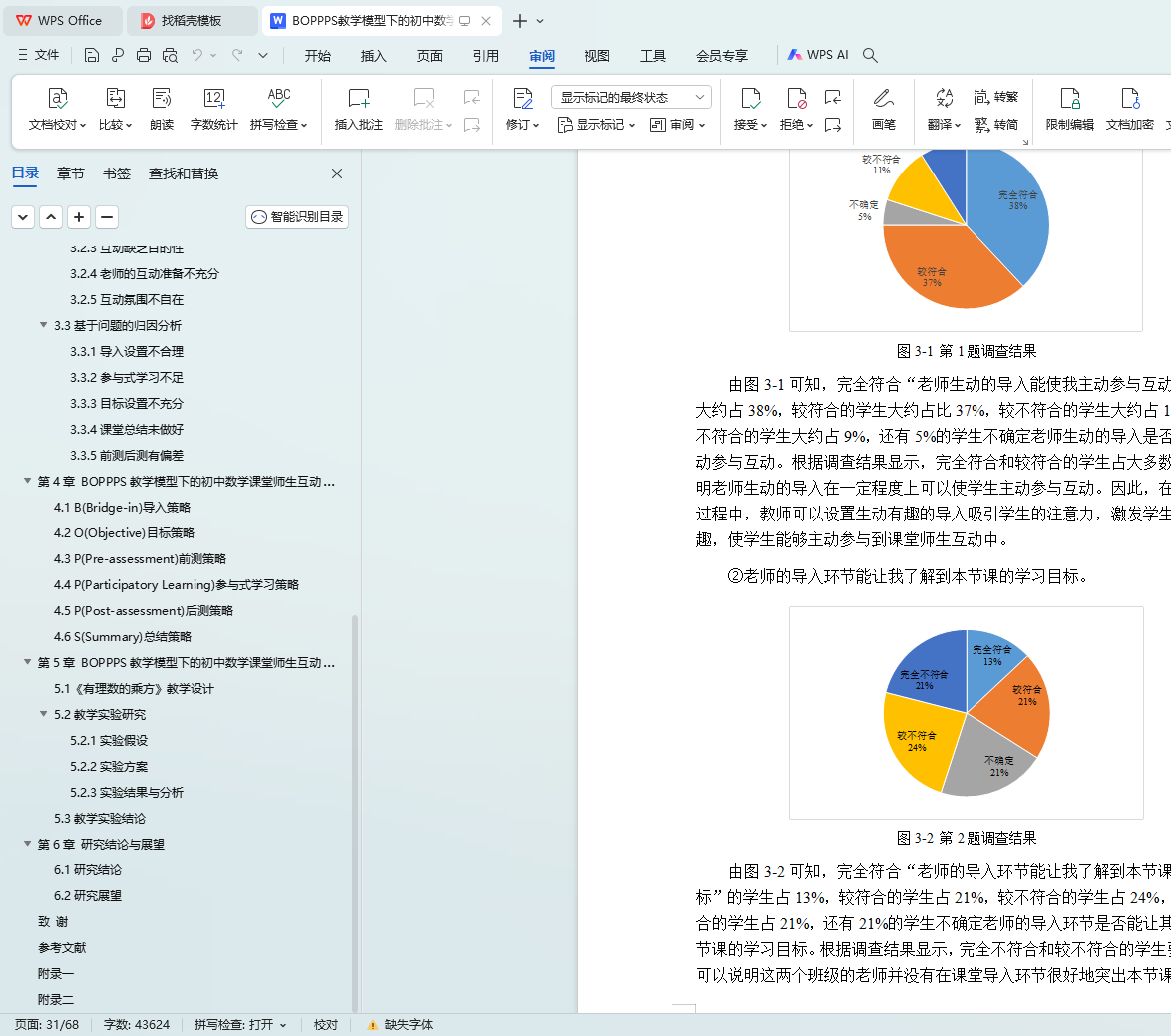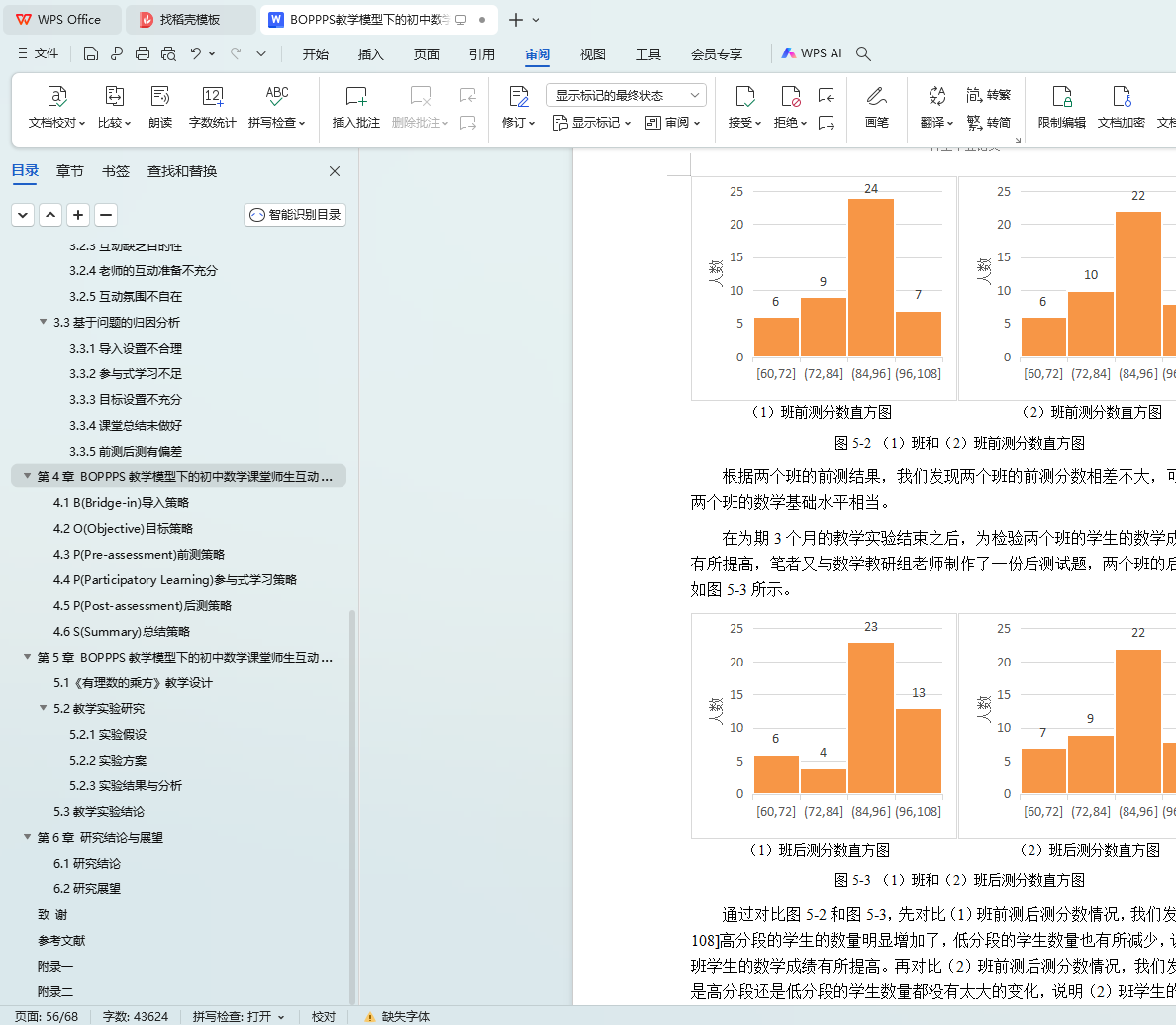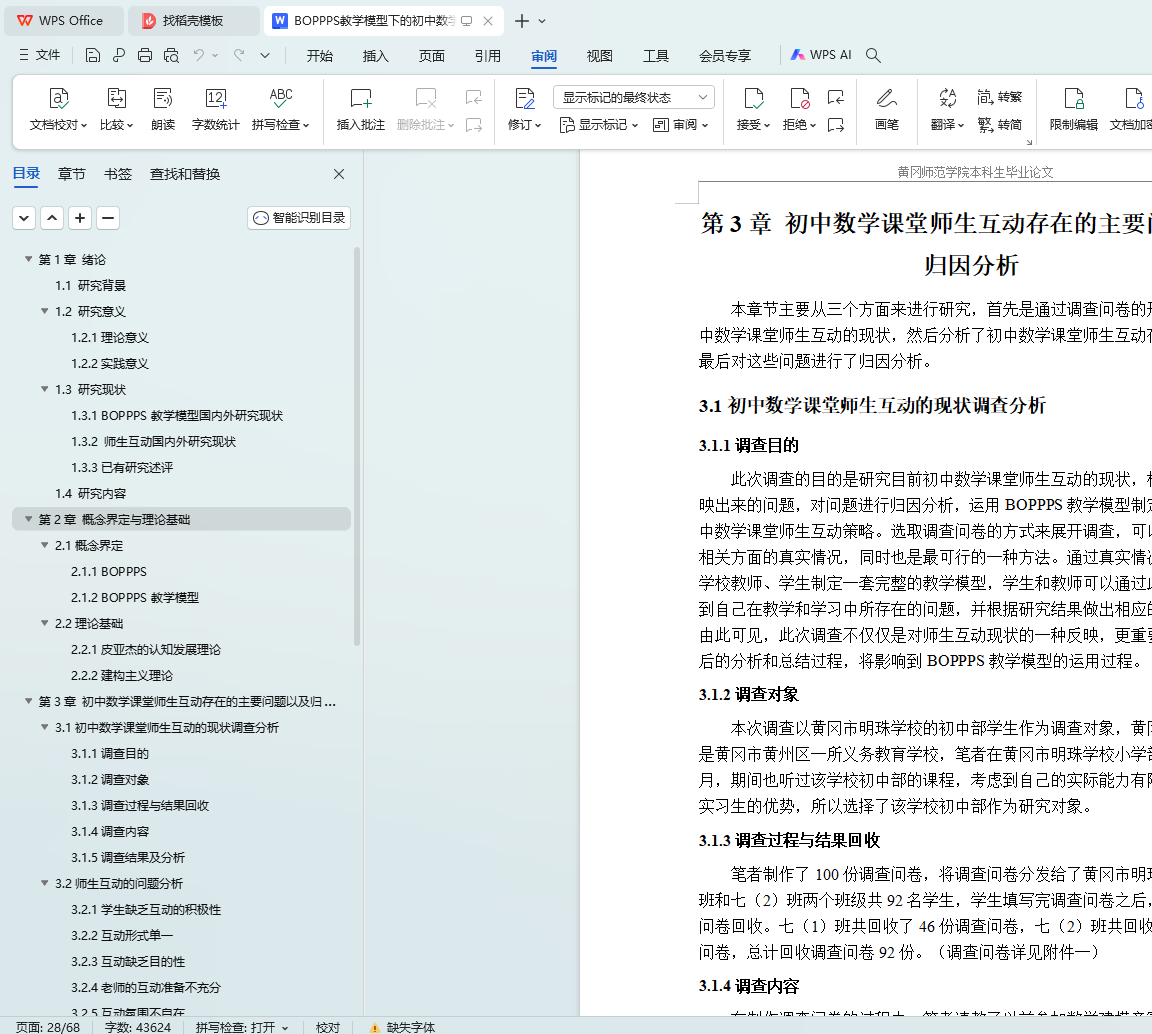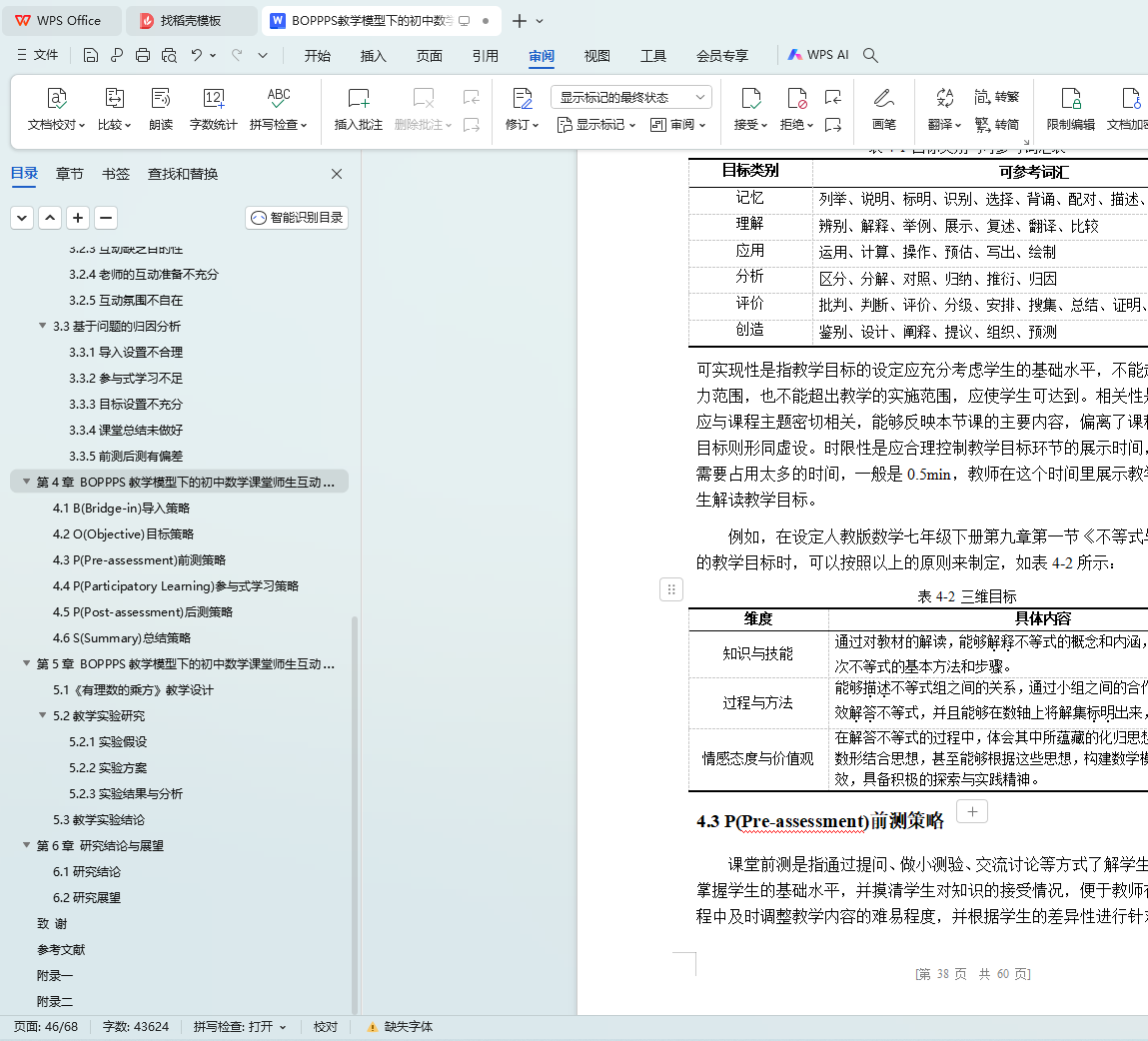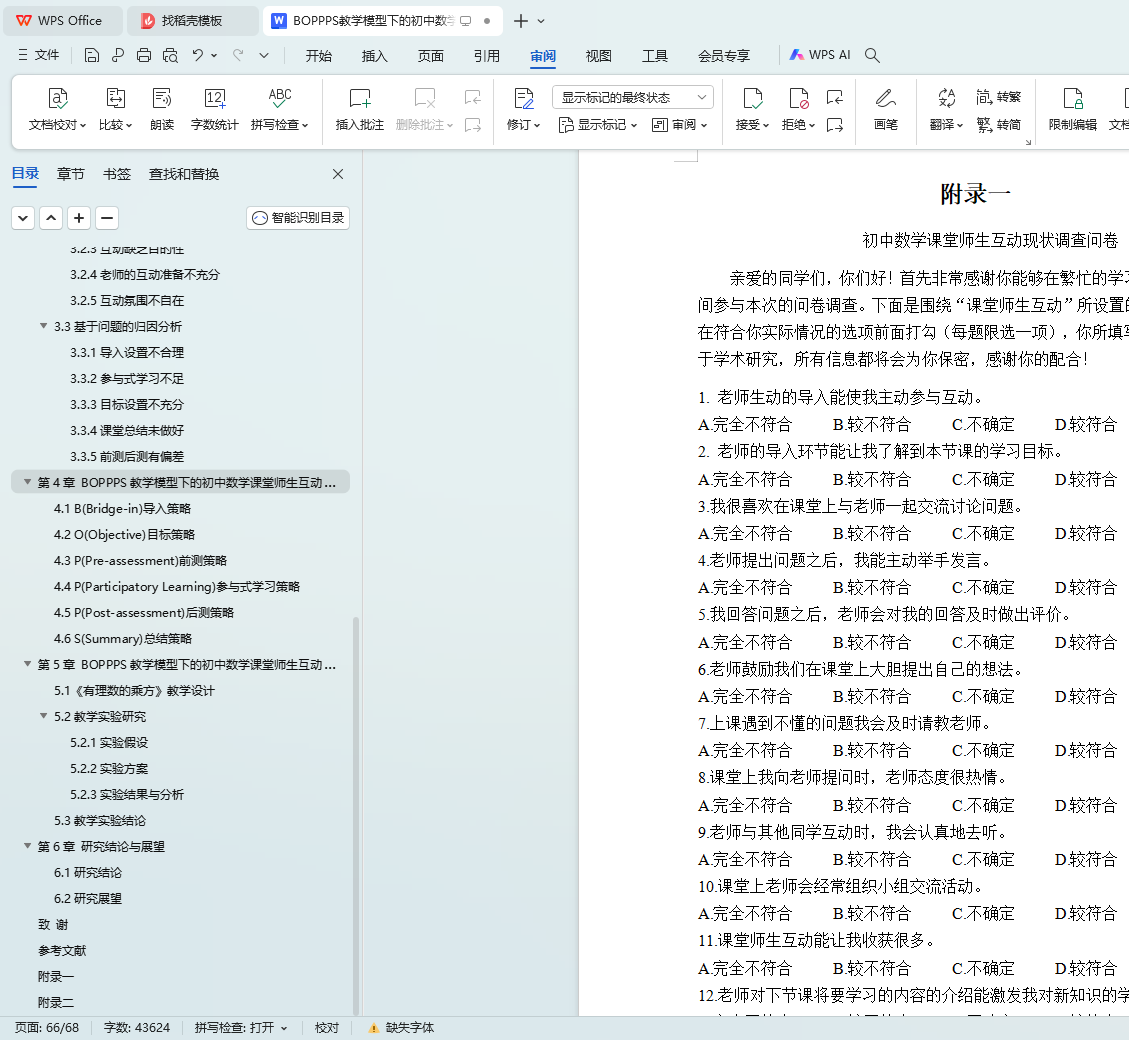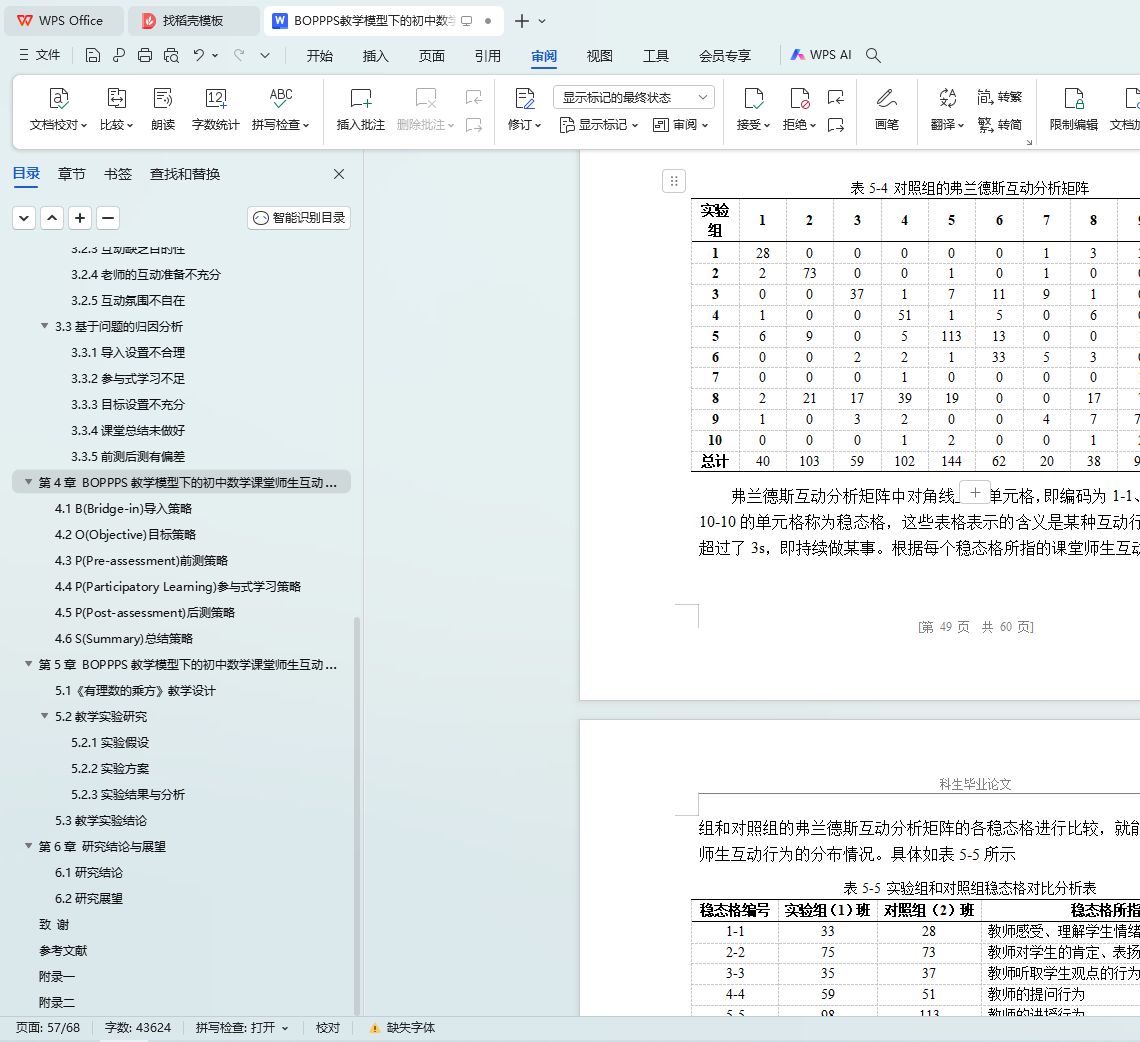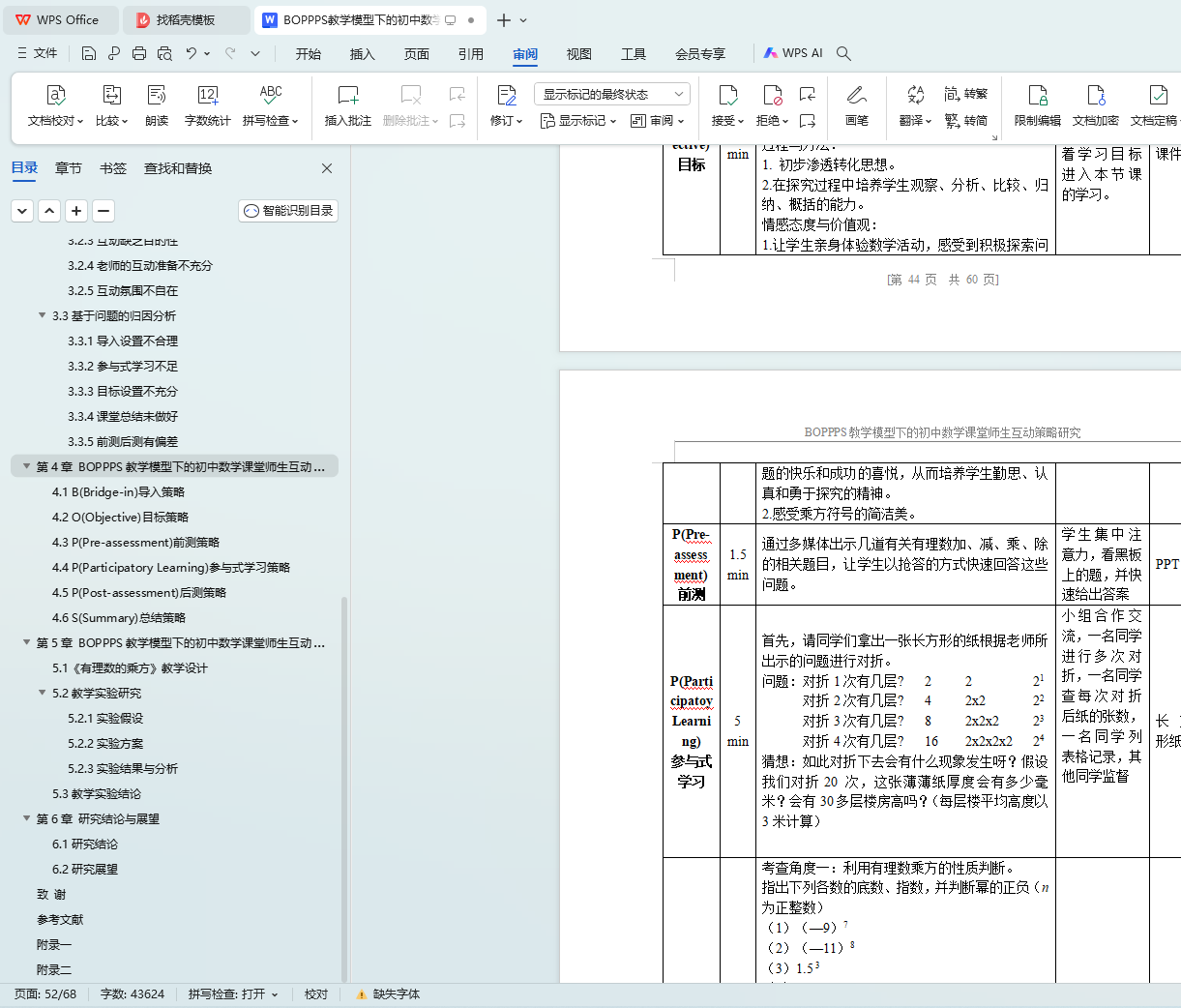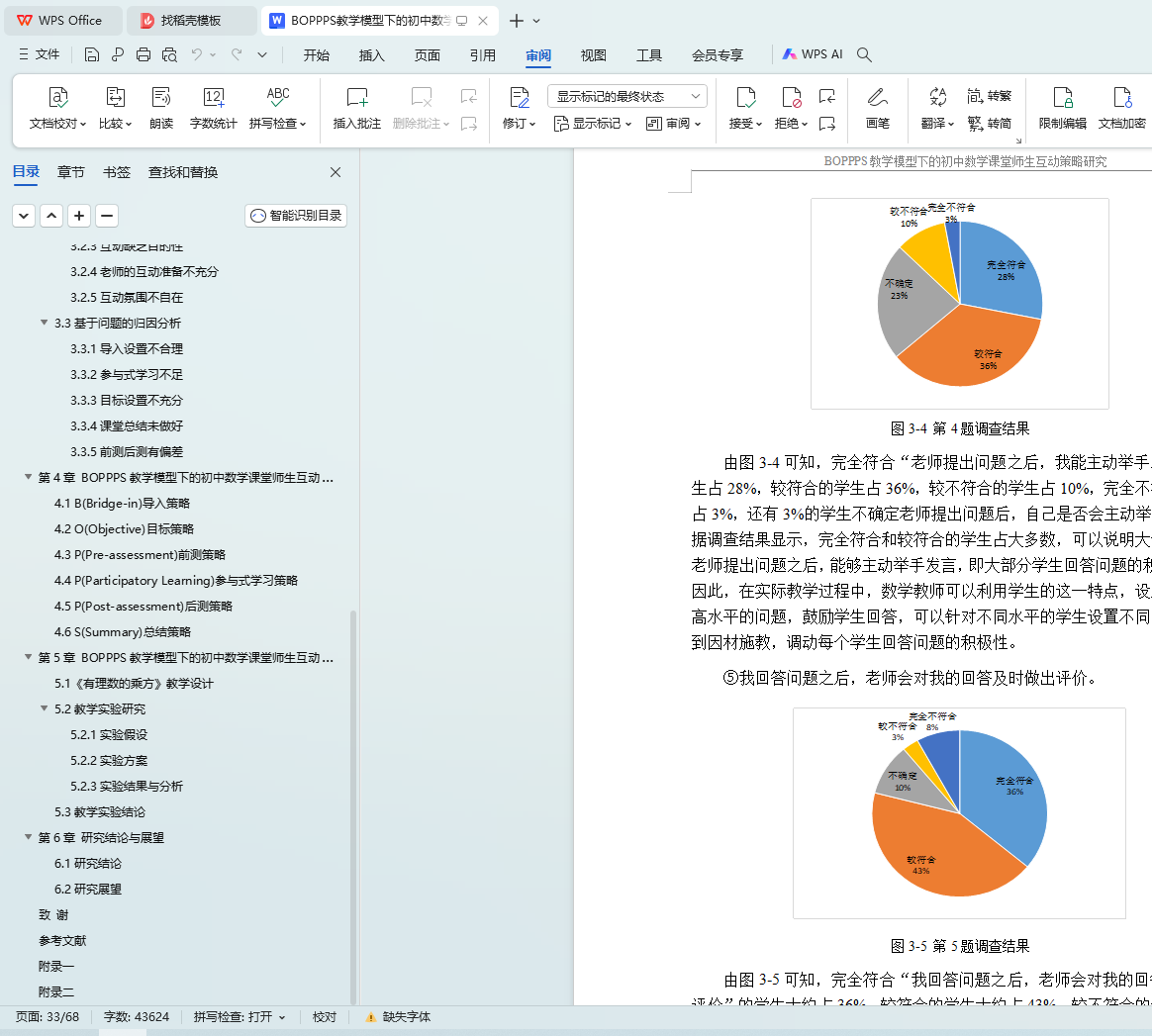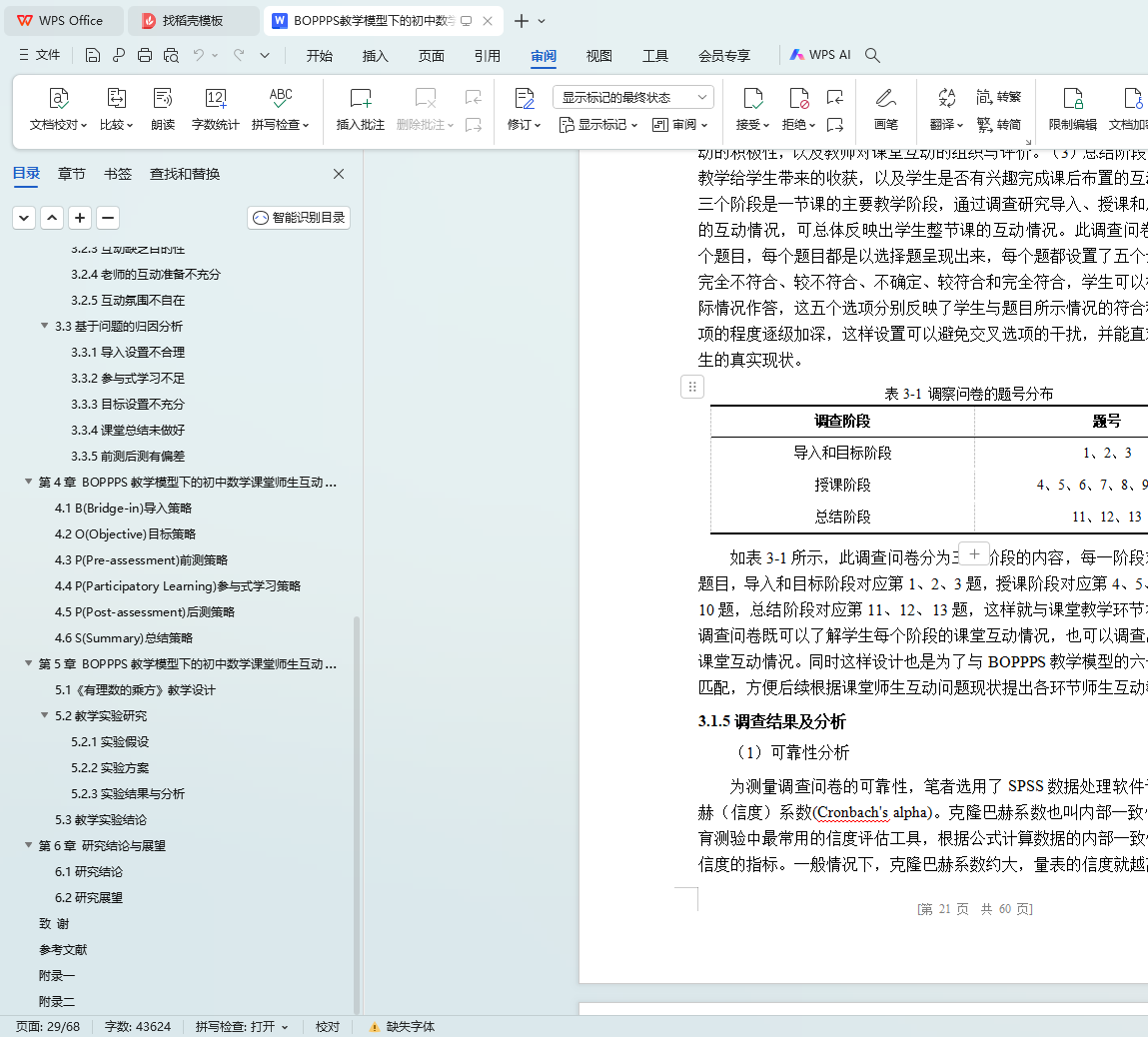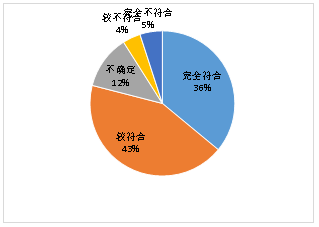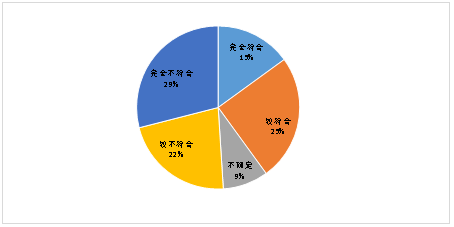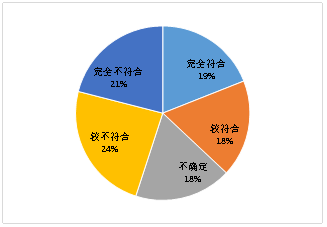摘 要
《教育部关于印发义务教育数学课程方案和课程标准(2022年版)》中提出了要实施促进学生发展的教学活动,教学活动应注重启发式,激发学生学习兴趣,引发学生积极思考,鼓励学生质疑问难,引导学生在真实情境中发现问题和提出问题。在这一大背景下,数学课堂上的师生互动的重要性便被凸显出来。但是,在实际课堂教学中,师生互动形式单一,仅仅局限于师问生答这一种形式,再者就是各种流于形式的课堂互动,并未达到真正的效果。师生互动存在的问题远不止于此,这些问题直接影响着义务教育数学课程方案和课程标准的实施。因此,为了解决初中数学课堂中师生互动所存在的各种问题,笔者基于BOPPPS教学模型对初中数学课堂师生互动策略进行了研究。
本文研究主要从三个方面依次进行探讨:初中数学课堂师生互动存在的问题、BOPPPS教学模型下的初中数学课堂师生互动策略以及BOPPPS教学模型下的初中数学课堂师生互动策略在实际教学设计中的应用。
基于以上三个方面,本研究首先采用了问卷调查的研究方法总结了初中数学课堂师生互动存在的问题,可以分为以下五个方面:(1)学生缺乏互动的积极性;(2)互动形式单一;(3)互动缺乏目的性;(4)老师的互动准备不充分;(5) 互动氛围不自在。接着对初中数学课堂师生互动存在的问题进行了归因分析,具体原因可以概括为以下五个方面:(1)导入设置不合理;(2)参与式学习不足;(3)目标设置不充分;(4)课堂总结未做好;(5)前测后测有偏差。然后通过研究BOPPPS教学模型,提出了关于初中数学课堂师生互动的策略。最后为了验证所提策略的可行性,选取了初中数学中最具代表性的课题进行了案例分析,策划了教学设计并将其应用于真实教学中,通过观察实验过程,分析实验结果,发现了将BOPPPS教学模型下的初中数学课堂师生互动策略应用到实际教学中是切实可行而且卓有成效的,师生互动所存在的问题得到了有效的改善。
通过此次研究发现,BOPPPS教学模型下的初中数学课堂师生互动策略可以激发学生学习数学的兴趣,学生的独立思考、动手实践、自主探索、合作交流等能力都有显著的提高,利于学生养成良好的学习习惯,形成积极的情感、态度、价值观,提高核心素养。在实际教学中应用这些策略,可以大大提升课堂效率,促进学生主动发展,契合基础教育课程改革的目标要求。
关键词:BOPPPS教学模型;初中数学课堂;师生互动
Abstract
《The Ministry of Education's Compulsory Education Mathematics Curriculum Plan and Curriculum Standards (2022 Edition)》 proposed to implement teaching activities to promote student development, and teaching activities should focus on heuristics, stimulate students' interest in learning, trigger students' positive thinking, encourage students to question and ask questions, and guide students to find problems and ask questions in real situations. In this context, the importance of teacher-student interaction in the mathematics classroom is highlighted. However, in the actual classroom teaching, the form of teacher-student interaction is single, which is only limited to the form of teacher question-student answer, and then there are various forms of classroom interaction, which has not achieved real results. The problems of teacher-student interaction go far beyond this, which directly affect the implementation of compulsory education mathematics curriculum programs and curriculum standards. Therefore, in order to solve various problems of teacher-student interaction in junior high school mathematics classroom, the author studies the teacher-student interaction strategy of junior high school mathematics classroom based on the BOPPPS teaching model.
This article mainly explores the problems of teacher-student interaction in junior high school mathematics classrooms from three aspects in sequence: the strategies for teacher-student interaction in junior high school mathematics classrooms under the BOPPPS teaching model, and the application of the strategies for teacher-student interaction in junior high school mathematics classrooms under the BOPPPS teaching model in practical teaching design.
Based on the above three aspects, this study first uses the research method of questionnaire survey to summarize the problems of teacher-student interaction in junior high school mathematics classroom, which can be divided into the following five aspects: (1) students' lack of enthusiasm for interaction; (2) Single form of interaction; (3) the interaction lacks purpose; (4) The teacher's interaction is not well prepared; (5) The interactive atmosphere is uncomfortable. Then, the problems of teacher-student interaction in the junior high school mathematics classroom were attributed and analyzed, and the specific reasons can be summarized into the following five aspects: (1) the import settings are unreasonable; (2) insufficient participatory learning; (3) insufficient target setting; (4) The class summary is not done well; (5) There is a deviation in the pre- and post-test. Then, by studying the BOPPS teaching model, a strategy for teacher-student interaction in the junior high school mathematics classroom is proposed. Finally, in order to verify the feasibility of the proposed strategy, the most representative topics in junior high school mathematics are selected for case analysis, the teaching design is planned and applied to real teaching, and through observing the experimental process and analyzing the experimental results, it is found that it is feasible and effective to apply the teacher-student interaction strategy of junior high school mathematics classroom under the BOPPPS teaching model to actual teaching, and the problems existing in teacher-student interaction have been effectively improved.
Through this study, the teacher-student interaction strategy of junior high school mathematics classroom under the BOPPPS teaching model can stimulate students' interest in learning mathematics, students' independent thinking, hands-on practice, independent exploration, cooperation and communication and other abilities have been significantly improved, students have developed good learning habits, formed positive emotions, attitudes, values, and core literacy have also been improved. The application of these strategies in actual teaching can greatly improve classroom efficiency and promote students' active development, which is in line with the goals and requirements of basic education curriculum reform.
Keywords: BOPPPS teaching model; Junior High School Mathematics Classroom; Teacher-student interaction
目 录
第1章 绪论
1.1 研究背景
1.2 研究意义
1.2.1理论意义
1.2.2实践意义
1.3 研究现状
1.3.1 BOPPPS教学模型国内外研究现状
1.3.2 师生互动国内外研究现状
1.3.3已有研究述评
1.4 研究内容
第2章 概念界定与理论基础
2.1概念界定
2.1.1 BOPPPS
2.1.2 BOPPPS教学模型
2.2理论基础
2.2.1皮亚杰的认知发展理论
2.2.2建构主义理论
第3章 初中数学课堂师生互动存在的主要问题以及归因分析
3.1初中数学课堂师生互动的现状调查分析
3.1.1调查目的
3.1.2调查对象
3.1.3调查过程与结果回收
3.1.4调查内容
3.1.5调查结果及分析
3.2师生互动的问题分析
3.2.1学生缺乏互动的积极性
3.2.2互动形式单一
3.2.3互动缺乏目的性
3.2.4老师的互动准备不充分
3.2.5互动氛围不自在
3.3基于问题的归因分析
3.3.1导入设置不合理
3.3.2参与式学习不足
3.3.3目标设置不充分
3.3.4课堂总结未做好
3.3.5前测后测有偏差
第4章 BOPPPS教学模型下的初中数学课堂师生互动策略研究
4.1 B(Bridge-in)导入策略
4.2 O(Objective)目标策略
4.3 P(Pre-assessment)前测策略
4.4 P(Participatory Learning)参与式学习策略
4.5 P(Post-assessment)后测策略
4.6 S(Summary)总结策略
第5章 BOPPPS教学模型下的初中数学课堂师生互动教学实验研究
5.1《有理数的乘方》教学设计
5.2教学实验研究
5.2.1实验假设
5.2.2实验方案
5.2.3实验结果与分析
5.3教学实验结论
第6章 研究结论与展望
6.1研究结论
6.2研究展望
致 谢
参考文献
附录一
附录二
